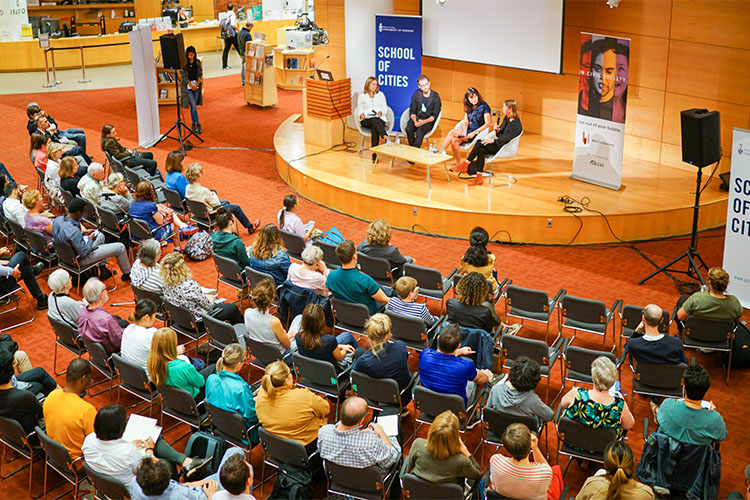How do public spaces shape city life? What do we want for society and for our city?
The University of Toronto’s School of Cities has partnered with the Toronto Public Library for a four-part lecture series to answer some of the key questions and challenges surrounding public space.
“Toronto is a growing city and we’re growing vertically,” said Shauna Brail, an associate professor of urban studies and the school’s associate director of partnerships and outreach. “There’s a real challenge in ensuring that as dwelling units get smaller, we create spaces outside of private spaces.
“We need to think about public space differently as a 21st century city.”
At the first talk, Tuesday evening, Alissa North, an associate professor at the John H. Daniels Faculty of Architecture, Landscape, and Design and author of Operative Landscapes: Building Communities Through Public Space, said the image of parks while growing up in Toronto were flat, open spaces, but that view no longer holds true.
“What’s amazing about Sorauren [Avenue] Park is that it’s been imprinted by community use. It started with the pumpkin festival, there’s a really amazing market, Raptors games, movie nights, and then the plaza came along,” she told the crowd gathered at the Toronto Reference Library.
“But you know your community park has arrived when you get the bake oven. It shows that community park is working. When Toronto invests in neighbourhoods – that’s how you have a win.”
In fact, Toronto has 1,500 parks, about 12.6 per cent of city land, equal to 8,000 hectares of parkland. It’s a lot for the city to work with, while also looking at ways to improve, said U of T master’s in planning alumna Ann-Marie Nasr, director of parks development and capital projects for the City of Toronto’s Parks, Forestry and Recreation.
“Our culture has grown. There’s an expectation what public spaces need to be for daily living,” she said. “People used to think about going to a park on the weekend, and now it’s just a seamless extension of people’s living space.”
Alex Josephson, a lecturer at Daniels and co-founder of architecture and design firm PARTISANS, said architecture requires many interdisciplinary inputs, from visionaries to engineers, as well as the public.

PARTISANS is currently revitalizing Toronto’s Union Station, one of Canada’s most significant heritage buildings. Josephson said they looked at the project through the perspective of the individual, rather than the crowd.
“We feel like we brought a layer to Union Station that’s all about programming – continuous, temporary programming. We flipped the idea of a train station into a cultural hub, a platform for Toronto’s most diverse, culinary, retail and cultural offerings,” he said.
“As much as it feels the city is fully built-out, it’s not even close. I think it’s about [Toronto] recognizing what we have, and leveraging it fearlessly and boldly, where any [visitor] would come here, just to experience our public realm.”
Further discussions this fall will examine city streets, digital space and privacy.
“In Toronto we’re grappling with these questions around digital technology and the impact on our public and private spaces,” said Brail, citing Sidewalk Labs’ partnership with Waterfront Toronto and their redevelopment proposal for Quayside, a parcel of land on Toronto’s eastern waterfront.
“What happens in the public realm when you have a private partner – particularly a private partner with strong ties to one of the largest tech companies in the world [Google] – and what does that mean for people who use that space?”
The next installment of Where We Gather: Streets of Toronto takes place Oct. 7 at the Toronto Public Library’s Bloor/Gladstone branch.

